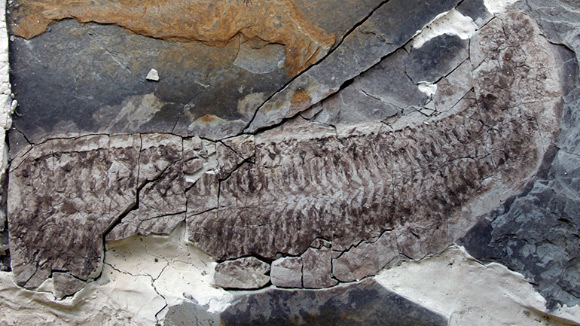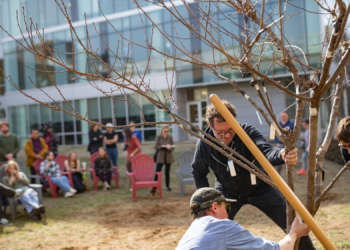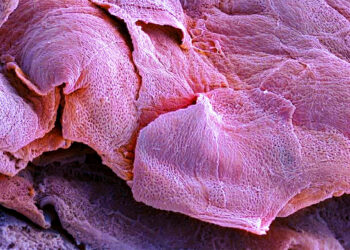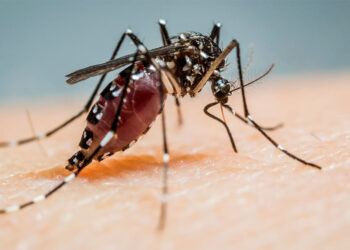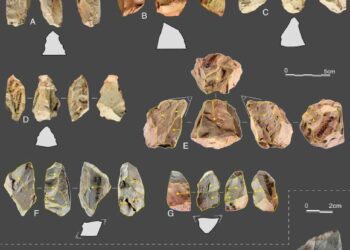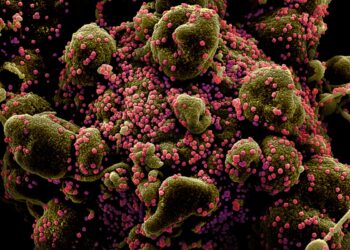A paleontologist at the University of Leicester has described a new genus and species of enigmatic multisegmented arthropod using a fossilized specimen found over two decades ago in South Africa.
Scientifically named Keurbos susanae and nicknamed ‘Sue’ after its discoverer’s mum, the ancient arthropod lived during the Ordovician period, around 444 million years ago.
“Sue is an inside-out, legless, headless wonder,” said University of Leicester’s Professor Sarah Gabbott, author of the study.
“Remarkably her insides are a mineralized time-capsule: muscles, sinews, tendons and even guts all preserved in unimaginable detail.”
“And yet her durable carapace, legs and head are missing — lost to decay over 440 million years ago.”
“We are now sure she was a primitive marine arthropod but her precise evolutionary relationships remain frustratingly elusive.”
“Today about 85% of animals on Earth are arthropods, and they include shrimps, lobsters, spiders, mites, millipedes and centipedes.”
“They have an excellent fossil record stretching back over 500 million years but usually their fossil remains are of their external features, whereas ‘Sue’ is the complete opposite because it is her insides that are fossilized.”
The fossilized specimen of Keurbos susanae was found in the Soom Shale in South Africa.
“These strata were laid down on the seafloor over 440 million years ago at a time when a devastating glaciation had wiped out about 85% of Earth’s species — one of the big five mass extinctions,” Professor Gabbott said.
“It seems that the marine basin in which ‘Sue’ swam was somehow protected from the worst of the freezing conditions and a fascinating community of animals, including ‘Sue,’ took refuge there.”
“The conditions in the sediments where ‘Sue’ came to rest were toxic in the extreme.”
“There was no oxygen but worse than that there was deadly — and stinking — hydrogen sulfide dissolved in the…
Read the full article here

